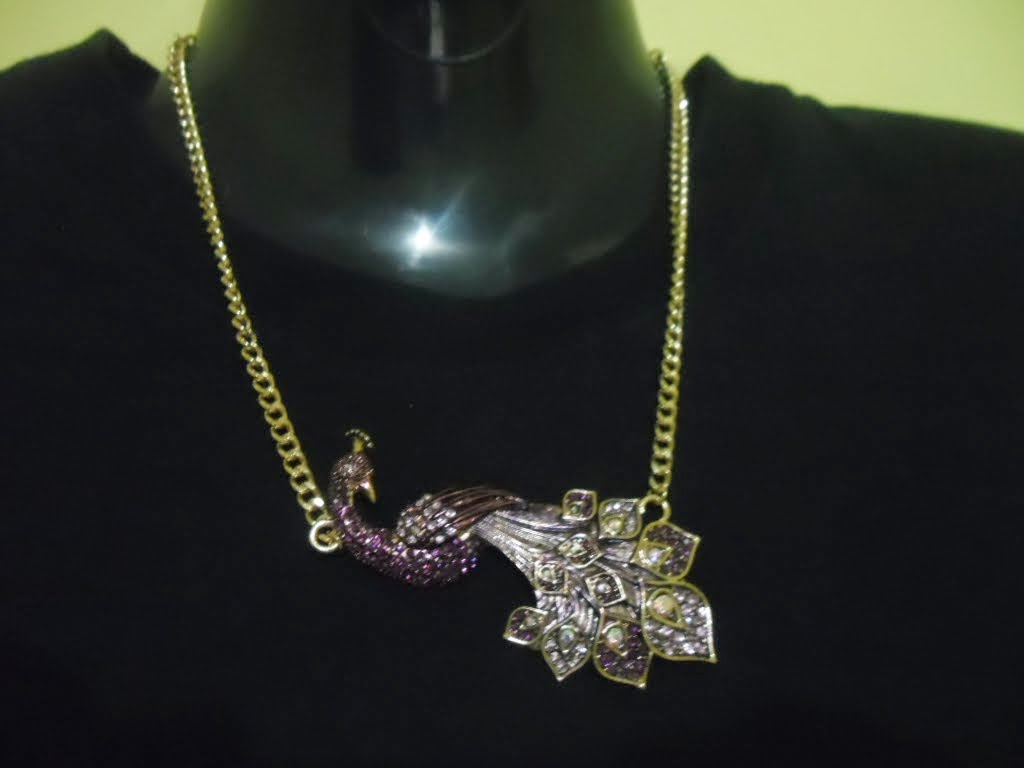The terms "costume" and "fashion" are used synonymously when talking about jewelry, but there are some subtle differences in time periods and perceived quality.
Costume Jewelry
Costume jewelry was popularized in the 1930s for practical reasons. Women often possessed valuable pieces that were passed down from mother to daughter as family heirlooms. It was too risky to wear these pieces due to potential damage, loss, and theft, so consumers had replicas made from cheaper materials for everyday wear. The practice of creating faux jewelry became popular because women could expand their jewelry collections for versatility and wardrobe accessorizing without spending a fortune on fine pieces.Costume jewelry became fashionable accessories for commoners who could not afford valuable metals and precious stones. The name "costume jewelry" stems from its use in stage performances. In theatrical plays, directors wanted the audience to see the dazzling jewelry, but the cost of real pieces was not feasible for most productions.
Prop departments created costume jewelry with faux gems and sparkling rhinestones that the audience could see and the budget could afford. The fake jewelry also prevented theft among cast and crew members. During the early development of costume jewelry, women paid jewelers to craft pieces to be worn with only one outfit. This tradition differs from modern consumers who purchase jewelry to match a variety of outfits that they own. Costume jewelry made the practice of buying fashionable pieces for individual outfits more affordable. Consumers could buy fake jewelry for the purpose of fashion and purchase new pieces as trends shifted.
Fashion Jewelry
Fashion jewelry is the evolution of costume jewelry and differs only slightly in its intended use. This type gained popularity in the 1980s as young women wore fashion jewelry to make statements. The term "fashion jewelry" is more recent than "costume jewelry" and incorporates fun and playful styles. Consumers wear this type to dress up outfits and follow current fashion trends. Fashion jewelry styles are constantly changing as new trends emerge whereas costume jewelry encompasses timeless pieces that are now considered vintage or antique. Some fashionable women prefer fashion jewelry over higher end pieces because they can spend less money on jewelry that will only be in style for a season or two. The following chart illustrates the changing trends in fashion jewelry over three decades.1980s
Jewelry fashions included large, colorful beads on necklaces and bracelets. Young women wore sweatbands on their wrists, ankles, and heads as fashion statements. Extra-large, gold-plated hoop earrings were popular among teenagers and young women. Teenagers adorned their wrists in wide plastic bracelets and bangles.1990s
The grunge era incorporated chunky jewelry made of nickel with silver plating. Metal bead necklaces and chains became popular in regular and extra-large sizes. Body jewelry was popular for both men and women. Manufacturers produced different gauges for rings worn in the nose, navel, ear, tongue, eyebrow, and lip. Hello Kitty and other character fashion jewelry was popular for children and young teens.2000s
Sterling silver became a popular and affordable material to use in fashion jewelry. Women wore thinner necklace chains for a subtler fashion statement. Gold- and silver-plated Figaro chains were popular for men. Children, teens, and young adults liked beaded bracelets of varying colors with hidden meanings. Rubber bracelets and bangles made a comeback in the early part of the 21st century. Charm bracelets reemerged as collectible fashion pieces with varying price ranges depending on the materials used.As trends come and go, fashion jewelry is a term used to describe any piece that is in style and not constructed from valuable metals or stones. It is a versatile category that includes a variety of materials, such as rubber, metal, plastic, acrylic, and semi-precious stones.
Perceived Quality of Costume and Fashion Jewelry
Some consumers distinguish costume jewelry from fashion jewelry by the value of the materials used. When the term "fashion jewelry" became mainstream, the variety of materials available was more diverse than those used for costume jewelry in the 1930s through the 1970s. For example, costume jewelry often utilized nickel and aluminum while fashion jewelry may feature brass or sterling silver. Due to the gap in available resources, some jewelers consider fashion jewelry to be more expensive than costume jewelry. On the other hand, costume jewelry can be priced higher as a valuable antique or vintage accessory.












Thank you for sharing your wonderful thoughts on Fashion Jewelry. MyStyle Jewelry is an online shop that offers a wide choice for fashion jewelry admirers.
ReplyDelete